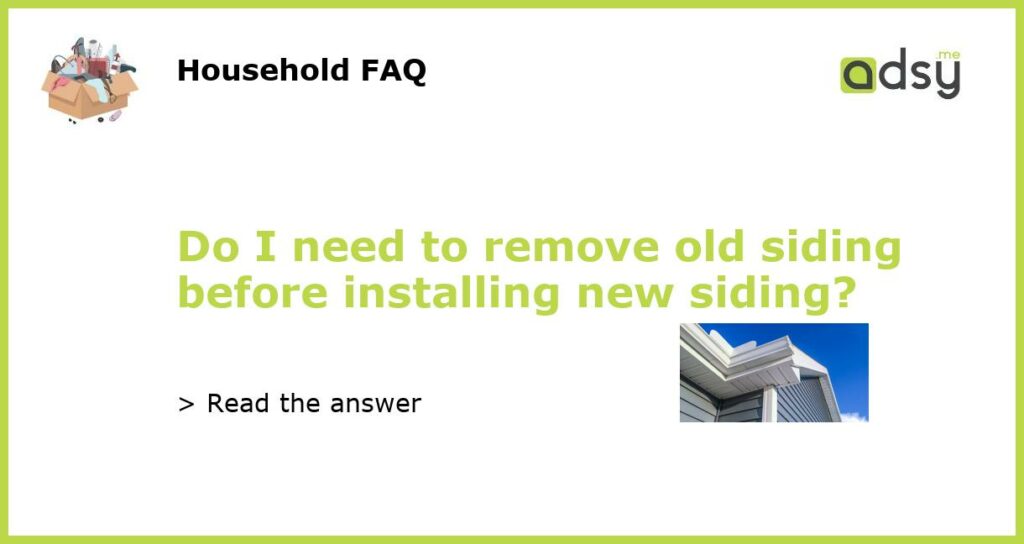Yes, old siding should be removed before installing new siding
The decision to remove old siding before installing new siding may seem like an unnecessary step, but it is actually an important part of the installation process. While some homeowners may opt to install new siding directly over the existing siding, doing so can lead to a host of problems down the line. In this article, we will explore the reasons why removing old siding is essential for a successful and long-lasting siding installation.
The importance of a solid foundation
When it comes to home improvement projects, including siding installation, having a solid foundation is crucial. By removing the old siding, you can assess the condition of the underlying structure and address any issues that may be present. This includes identifying and repairing damage caused by moisture, pests, or rot. It also allows for the proper installation of a moisture barrier, insulation, and other components that will enhance the performance of the new siding.
Ensuring proper installation
Installing new siding directly over old siding can compromise the integrity of the installation. It may lead to an uneven surface, which can affect the appearance and durability of the new siding. Removing the old siding allows for a smooth and level surface, ensuring that the new siding is securely installed and aligned correctly.
Preventing moisture issues
Moisture is one of the biggest enemies of a home’s exterior. By removing the old siding, you can inspect and address any existing moisture issues, such as water damage or mold growth. This step also allows for the installation of a moisture barrier, which helps to prevent water infiltration and protect the underlying structure from potential damage in the future.
Improving energy efficiency
Another reason to remove old siding before installing new siding is to improve energy efficiency. By removing the old siding, you can properly install insulation, which can help reduce heat transfer and make your home more energy-efficient. Insulation can help keep your home cooler in the summer and warmer in the winter, reducing the strain on your HVAC system and potentially lowering your energy bills.
In conclusion, removing old siding before installing new siding is a crucial step in the siding installation process. It allows for a solid foundation, ensures proper installation, prevents moisture issues, and improves energy efficiency. While the extra labor and cost may seem daunting, it is a worthwhile investment that will result in a more durable and aesthetically pleasing end result.

